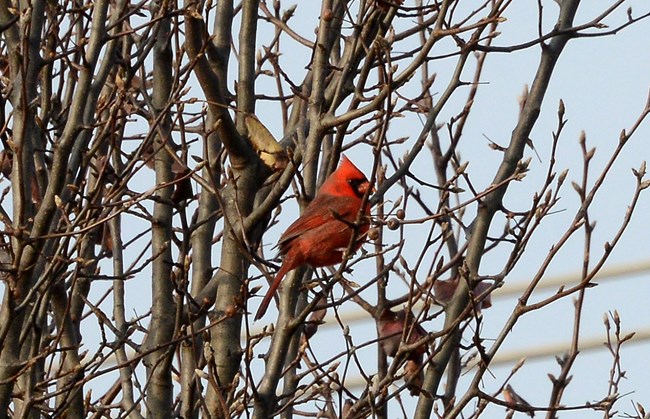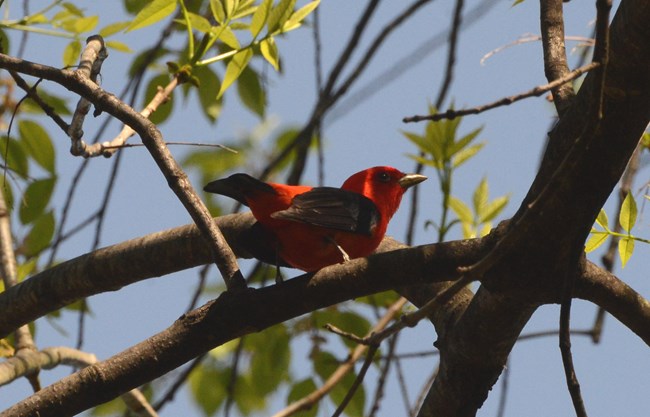|
NPS.gov / Park Home / Learn About the Park / Nature / Animals / Birds / Perching Birds
Birds in the family of Cardinalidae are found in North and South America. They are also known as cardinal-grosbeaks or cardinal-buntings. They are medium sized birds and love to eat seeds. Males in this family are more brightly colored than the females. A group of cardinals can be called a college, conclave, deeck, radiance, or a Vatican of cardinals.

© Bill Telfair Northern Cardinal (Cardinalis cardinalis)• Male cardinals are very protective of their homes• Female cardinals are one of the few North American female birds that sing • They mainly eat seeds and fruit but will also eat insects. They use their large bill and tongue to get to seeds by cutting or crushing the shells Identification Information:• Size: Between a Sparrow and a Robin (Small)• Color: Female cardinals are pale brown with some red highlights. Male cardinals are bright red with a black mask. 
© Bill Telfair Scarlet Tanager (Piranga olivacea)• Scarlet Tanagers love to eat insects but will also eat fruit and tender plant buds. The bugs they enjoy most include ants, moths, butterflies, plant lice, termites, grasshoppers, locusts, snails, earthworms, and spiders.• These pretty red birds are strong fliers and migrate long distances in fall and spring. • Male Scarlet Tanagers can sometimes have territorial singing battles where one or both of the males spread and droop their wings and raise their tail in threat. If neither one backs down, the males start chasing one another. • Female Scarlet Tanagers also sing and they sing a song that is similar to the males but is a softer, shorter, and less harsh song. Females sing to respond to a male’s song or while they are gathering nest material. Identification Information• Size: Between a sparrow and a robin (Small)• Color: During the spring and summer, the adult male Scarlet Tanagers are a bright red with black wings and tails. Females and young male tanagers are a greenish/yellow with darker wings and tails.
All of the above information is an abbreviated version of information gathered from the Cornell Lab of Ornithology. Please visit their website for more in-depth bird information.
|
Last updated: September 13, 2019
